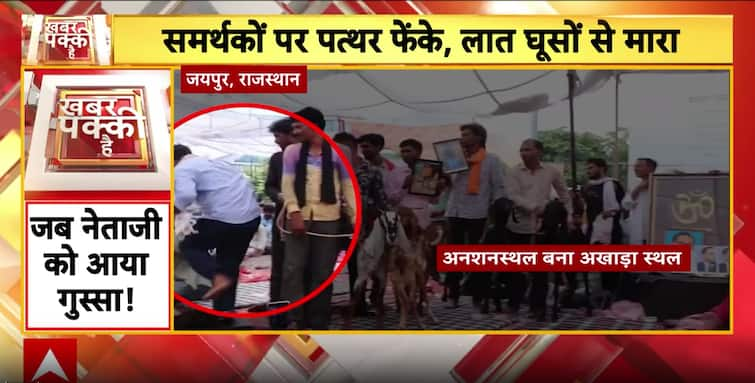Last Updated:
In Nankana Sahib district, three deaths and 33 injuries were reported, but neither Prime Minister Shehbaz Sharif nor Punjab Chief Minister Maryam Nawaz visited the shrine.

Gurdwara Darbar Sahib in Kartarpur in Pakistan affected by flooding caused by the overflowing of Ravi River. (Image: Facebook/Travel With Waqas Haider)
Pakistan’s recent flood management has once again revealed the stark contrast in how the country treats Sikh religious sites, with Kartarpur Sahib used as a tool for military optics while Nankana Sahib — the birthplace of Guru Nanak — faced glaring neglect. Top intelligence sources told CNN-News18 that the 2025 floods in Pakistan’s Punjab province exposed systemic discrimination against Sikh-majority areas and shrines.
Over 1.2 million people were displaced across Pakistan, with estimated losses crossing $50 billion. Kartarpur Sahib, Guru Nanak’s final resting place, was inundated at ground level, forcing the rescue of nearly 200 pilgrims. Yet, while the Pakistani Army quickly deployed to Kartarpur to project itself as a protector of Sikh heritage, Nankana Sahib — globally revered as the birthplace of Guru Nanak — saw minimal state prioritisation. In Nankana Sahib district, three deaths and 33 injuries were reported, but neither Prime Minister Shehbaz Sharif nor Punjab Chief Minister Maryam Nawaz visited the shrine, despite its international significance.
Recommended Stories
According to intelligence reports, Sikh-majority villages around Nankana Sahib faced delayed relief, with essentials like food and water reaching only after NGOs such as Khalsa Aid and FDO stepped in. Weak flood bunds along the Ravi and Sutlej rivers worsened the damage in these areas, further fuelling anger among the diaspora. Sikh voices across the UK, Canada, and the US amplified the neglect on social media, accusing Islamabad of double standards.
Sources noted that while Kartarpur Corridor has been deliberately given “army-centric optics” for propaganda and diaspora outreach, the broader Sikh heritage in Pakistan remains under-resourced. The Evacuee Trust Property Board (ETPB), which controls gurdwara lands, has diverted over 20,000 acres around Nankana Sahib for private commercial use, further weakening the autonomy of Sikh institutions. Unlike India’s Shiromani Gurdwara Parbandhak Committee (SGPC), the SGPC in Pakistan operates under ETPB oversight, lacking both funds and independence.
Rights groups including Amnesty International and Human Rights Watch have also flagged discriminatory disaster relief against minorities, damaging Pakistan’s global image. The neglect indirectly impacted Sikh pilgrims elsewhere, with India refusing visas for jathas to Nankana Sahib in November 2025 citing security concerns.
Intelligence sources conclude that Islamabad is following a dual strategy — projecting army-led flood relief at Kartarpur for international leverage, while systematically sidelining Nankana Sahib and Sikh-majority villages in Punjab. This pattern, they say, reflects Pakistan’s continued exploitation of Sikh shrines for optics, without extending real protection or resources.
About the Author

Group Editor, Investigations & Security Affairs, Network18
Group Editor, Investigations & Security Affairs, Network18
September 16, 2025, 14:45 IST
Loading comments…
Read More



